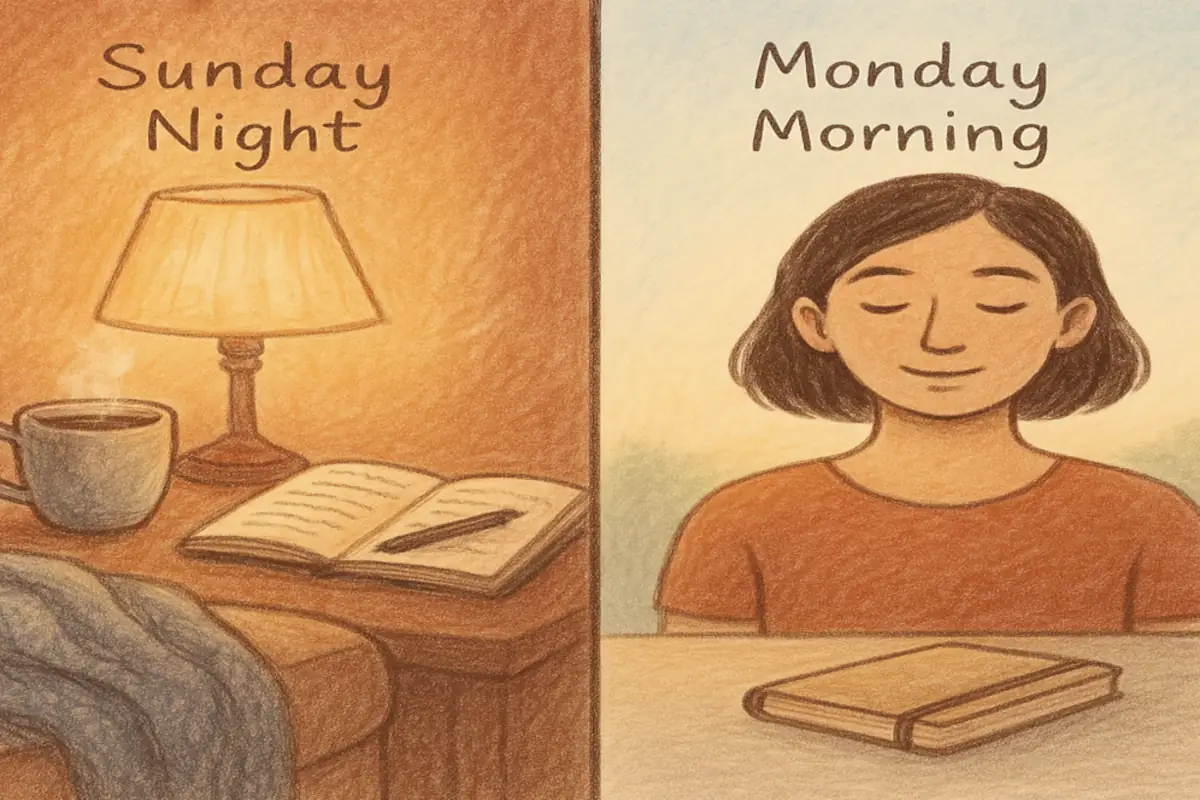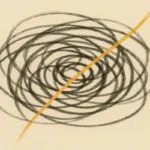The Sunday Scaries: A Proactive Tapping Routine to Start Your Week Calm
Featuring Inspiration from Maya Angelou, Benjamin Franklin, Virginia Woolf, and John Milton
I. Introduction
It begins quietly—maybe right after dinner. The laundry is folded, the dishes are put away, but in your mind, the emails have already started multiplying. The Sunday Scaries creep in like an uninvited guest, settling into your favorite chair and reminding you of everything you haven’t done.
You’re not the first to feel this. Benjamin Franklin once lit his candles on a Sunday night and bent over his desk, sketching out his week before it began. Virginia Woolf curled into her quiet chair, a novel in hand, letting the stillness shore her up for Monday. Maya Angelou rose with the sun, crafting words before the world made its demands. John Milton took his daily walks, trusting that nature could restore his mind.
Their rituals—part intention, part self-compassion—were their way of shaking hands with Monday before it arrived. Today, Emotional Freedom Technique (EFT), or tapping, offers a modern version of that same grace: a simple, rhythmic practice that blends physical movement with mindful reflection, turning Sunday dread into Sunday ease.
II. Understanding the Sunday Scaries
It’s tempting to think Sunday night anxiety belongs only to the overworked or the unfulfilled—but history says otherwise. Even Benjamin Franklin, with his boundless curiosity and neatly ordered days, felt the tug of anticipation as the week approached. His answer was to meet it head-on: a quiet hour with pen and paper, mapping the week before it began.
Virginia Woolf preferred a gentler transition. In the fading light of Sunday, she would retreat to her reading chair, letting the hum of the outside world fade until all that remained was the soft turning of pages. Maya Angelou sought her calm in the stillness of early morning, pen in hand before the sun climbed high. John Milton wandered garden paths, trusting the air, the trees, and the steady rhythm of his steps to clear the mental fog.
Today, we might call this unease “Sunday Scaries,” but its symptoms are timeless: a quickened pulse, a restless mind, a heaviness in the chest, or an unshakable sense of being “on call” for a week that hasn’t yet begun. These rituals—whether Franklin’s methodical planning or Woolf’s quiet retreat—worked not by erasing the week ahead, but by reshaping it into something known, intentional, and even welcome.
III. The Power of EFT Tapping for Sunday Anxiety
Just as Franklin paired planning with reflection, and Milton paired walking with contemplation, EFT blends physical action with inner awareness. It’s a gentle, portable method: tapping rhythmically on acupressure points while acknowledging—without judgment—what you feel.
Modern research shows that tapping can reduce stress hormones, slow anxious thoughts, and help the body shift from tension to ease. It’s both science-backed and deeply human, echoing the same goals Franklin, Woolf, Angelou, and Milton pursued in their own ways: readiness, clarity, and calm. When you tap, you’re not fighting Sunday anxiety—you’re meeting it, listening to it, and guiding it toward stillness.
IV. Step-by-Step Proactive Tapping Sequence
Setup Statement (Karate Chop Point)
Tap the side of your hand and repeat three times: “Even though I feel anxious and overwhelmed about the coming week, I deeply and completely accept myself.”
Tapping Points & Reminder Phrases
- Eyebrow: “This feeling of dread as Sunday ends.”
- Side of Eye: “Worrying about all the things I have to do.”
- Under Eye: “My mind racing with responsibilities.”
- Under Nose: “Pressure to start the week perfectly.”
- Chin: “Fear of not living up to expectations.”
- Collarbone: “I want to feel calm and prepared instead.”
- Under Arm: “Releasing this tension from my body.”
- Top of Head: “I am safe and ready for the week ahead.”
When you finish, breathe deeply. Check in again—how loud is the worry now? Repeat as needed, or adapt the words to match your thoughts. As you tap, you might picture Franklin’s steady pen, Angelou’s morning light, or Milton’s open path—reminders that calm is a choice you can make.
V. Enhancing Calm and Positive Mindset
Once the sharp edge of anxiety softens, welcome in gentler thoughts:
- “I am capable of handling whatever comes my way.”
- “I allow myself to rest and restore before the week begins.”
- “My mind is clear, my heart is open, and I welcome inspiration.” (Woolf & Angelou)
- “I begin my week with purpose.” (Franklin)
- “Nature and stillness restore me.” (Milton)
Pair your tapping with small, calming acts—stretching, a cup of tea, stepping outside to watch the sky darken. The point is not to chase away Monday, but to step toward it slowly, on your own terms.
VI. Conclusion & Encouragement
The Sunday Scaries are as old as work itself, and the desire to face Monday with grace is universal. The great minds of history found their ways to do it—through walks, words, planning, and stillness. You can, too.
Tapping is both a ritual and a reminder: you are allowed to meet Monday with a steady breath, an open heart, and the quiet confidence that you have prepared yourself—one tap, one breath, one mindful moment at a time.



